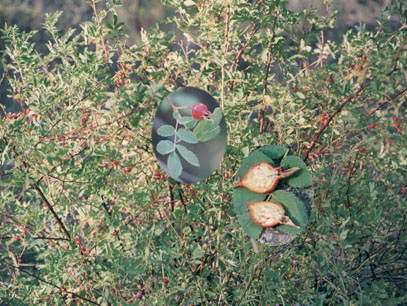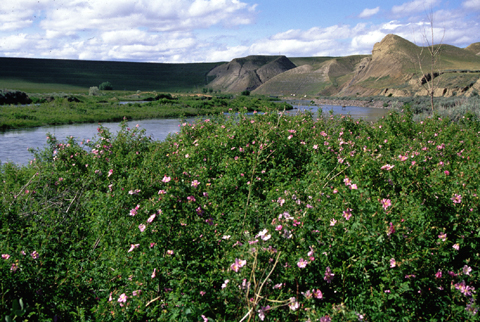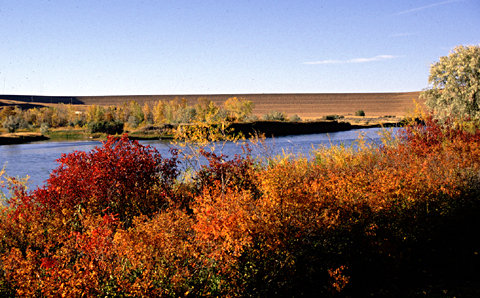What’s in a name? A rose by any other name would smell as sweet.
Nobody knows who named the rose, nor why. Nevertheless, the word serves in common for a medium-sized family of flowering plants numbering 107 genera and 3,100 species. The family includes fruit trees such as the apple, pear, and peach, and berry bushes such as the raspberry, as well as 100 species of cultivated rose—the most popular flower in the world.
There are more than 100 species of wild roses, too, ten of which occur in the Rocky Mountains from Saskatchewan and British Columbia south to California and New Mexico. The one pictured is the so-called Woods rose, woodsii, which was named by the English botanist John Lindley (1799-1865) in recognition of the American botanist, Alphonso Wood (1810-1881).
Meriwether Lewis was sufficiently familiar with the genus back home to recognize the new species he termed the “small rose of the prairies,” which he found on 5 September 1804, in present-day Nebraska near the mouth of the Niobrara River. Nor could he have failed to notice its sweetly fragrant blossoms during the next two Mays, Junes, and Julys.
The seedy fruits, or “hips” of the wild rose are edible, even healthful. Being rich in vitamin C, they once were eaten by Euro-Americans to prevent scurvy (although there’s no evidence the men of the expedition used them that way). Today, rose hips are used for tea, syrup, jelly, jam, and wine. Wild rose petals are sometimes candied, or used plain in salads.
Among Indians, however, tradition has leaned the other way. They have used decoctions of various parts of the plant for eye problems, nosebleed, sore throat, muscular pain, stomach problems, and diarrhea, but not as part of a regular diet.
At any rate, every wild rose we see today, no matter where, is related to those that thrilled Meriwether Lewis, and we are free to inhale the essence of his delight.



